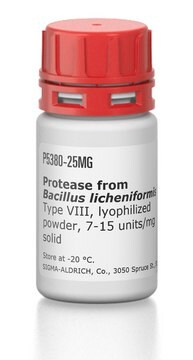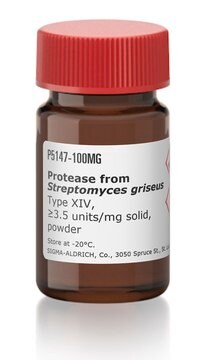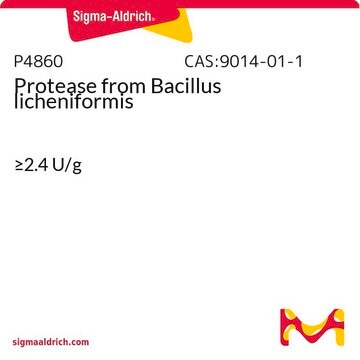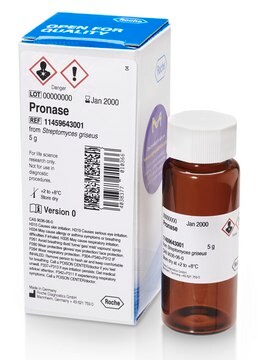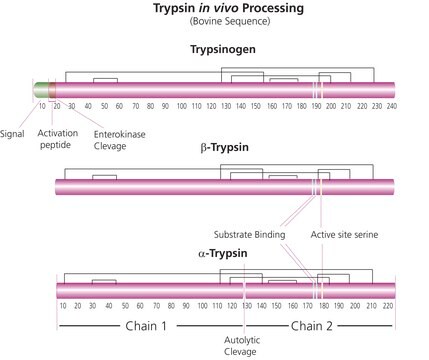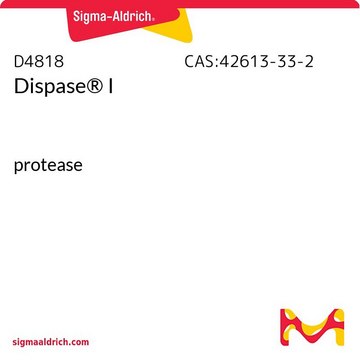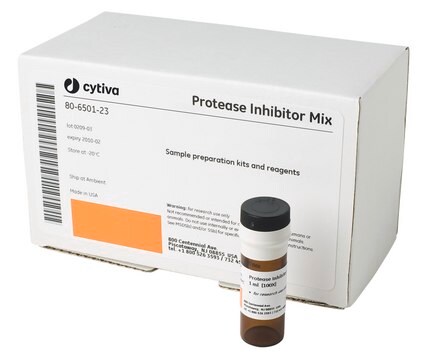P1512
Thermolysin from Geobacillus stearothermophilus
Type X, lyophilized powder, 30-350 units/mg protein (E1%/280)
Synonym(e):
Protease aus Bacillus thermoproteolyticus rokko, Thermophilic-bacterial protease
About This Item
Empfohlene Produkte
Biologische Quelle
Geobacillus stearothermophilus
Typ
Type X
Form
lyophilized powder
Spezifische Aktivität
30-350 units/mg protein (E1%/280)
Mol-Gew.
34.6 kDa by amino acid sequence
Aufgereinigt durch
crystallization
Versandbedingung
wet ice
Lagertemp.
−20°C
Allgemeine Beschreibung
Anwendung
Qualität
Einheitendefinition
Physikalische Form
Angaben zur Herstellung
Signalwort
Danger
H-Sätze
Gefahreneinstufungen
Resp. Sens. 1
Lagerklassenschlüssel
11 - Combustible Solids
WGK
WGK 3
Flammpunkt (°F)
Not applicable
Flammpunkt (°C)
Not applicable
Persönliche Schutzausrüstung
dust mask type N95 (US), Eyeshields, Faceshields, Gloves
Analysenzertifikate (COA)
Suchen Sie nach Analysenzertifikate (COA), indem Sie die Lot-/Chargennummer des Produkts eingeben. Lot- und Chargennummern sind auf dem Produktetikett hinter den Wörtern ‘Lot’ oder ‘Batch’ (Lot oder Charge) zu finden.
Besitzen Sie dieses Produkt bereits?
In der Dokumentenbibliothek finden Sie die Dokumentation zu den Produkten, die Sie kürzlich erworben haben.
Kunden haben sich ebenfalls angesehen
Protokolle
To standardize a procedure for the enzymatic assay of Protease using Casein as a substrate.
Unser Team von Wissenschaftlern verfügt über Erfahrung in allen Forschungsbereichen einschließlich Life Science, Materialwissenschaften, chemischer Synthese, Chromatographie, Analytik und vielen mehr..
Setzen Sie sich mit dem technischen Dienst in Verbindung.
